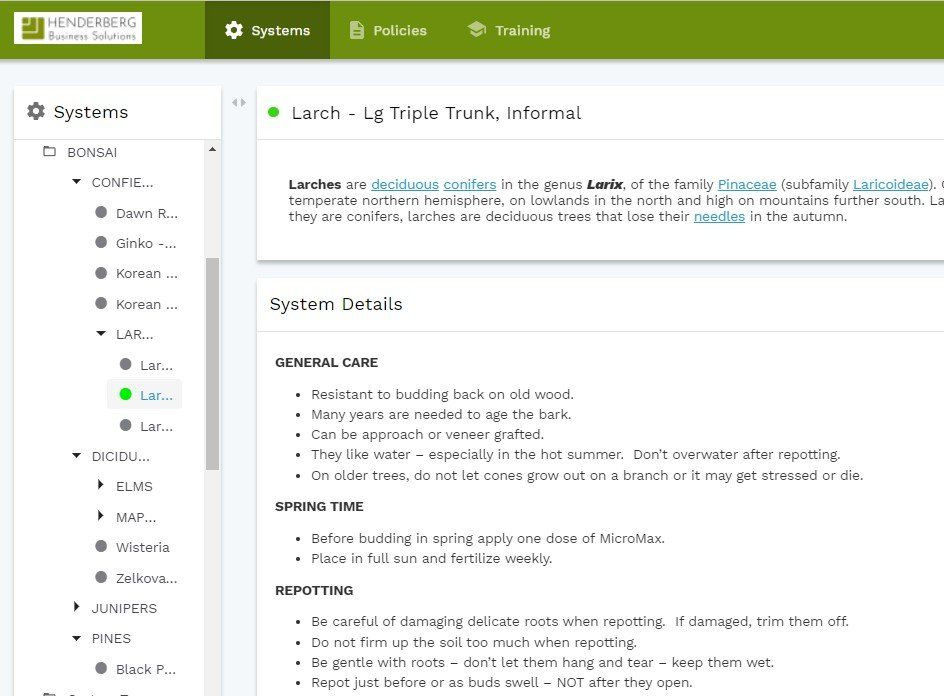December 16, 2021

I grow bonsai trees as a hobby. I guess it makes sense that I like to unwind with this type of activity because it requires focus and constant attention to do it right. And sometimes “doing it right” just means that the trees stay alive from year to year, which is no easy task. Growing bonsai is a lifelong combination of learning horticultural methods, observing the trees as they move through their annual cycles of life, and adapting to their changing needs. Oh, and luck – lots of that. Becoming adept at knowing what techniques to apply when, takes time to learn and can only be improved on by taking a lot of notes to regularly review.
The process is really a system of managing light, nutrients, and water intake at just the right time, all the time. I have grown trees on and off for decades and through it all I have kept a lot of records. There is no Farmer’s Almanac for this type of hobby and even the most helpful of books or videos don’t consider your specific local climate, which ultimately has a huge effect on the tree’s overall health. Just moving a tree from one owner’s home to another in a different part of town could have fatal consequences due to the change in water composition or availability of daily sun.
The documentation of my own systems though, is what helps me improve. I write down what I feel are my best practices and continuously work to refine them. I also document my failures and try to learn from them. And yes, there are regular failures.
It’s currently April in Rochester and as I write this, I am in the middle of the repotting season. This is the busiest time of year for bonsai enthusiasts as the trees need to be repotted at a very specific time. It is only when the tree is at its peak power for the year, just as the buds are swelling with energy, that they can be safely transplanted into a new container.
We strategically remove them from their pot every 2-5 years depending on the age and species. The soil has to be separated in part or in full, depending on how long it has been a bonsai (back to checking my reference log), and then the tree is placed into a new container or put back into the same one. There are a lot of factors at play here and much to document with photos and text. By pruning the larger roots during this process, we encourage fine roots to grow. This translates into smaller leaves, and ultimately a more proportionately structured miniature tree. Now you know the big secrets behind this little art.
Fortunately, I love to document and update systems just as much as I enjoy growing bonsai trees. Not everyone does though, and that’s usually why I get hired to help small, growing businesses. Many are scaling up faster than anticipated but forgot to document their best practices along the way. Now they find their culture is siloed, not everyone is operating in the same way, and there are a few key people who hold all of the corporate knowledge.
If you would like to see some of my bonsai trees on exhibit in Rochester on May 22nd, send me an e-mail at jason@henderberg.com for the details. Some of the little guys have been shown in art galleries and international exhibitions over the years so they will be ready for your visit. You will get a lot out of the live experience, and now that you know a bit about what it takes to perform at this level, you will also appreciate the value of well-documented systems.

